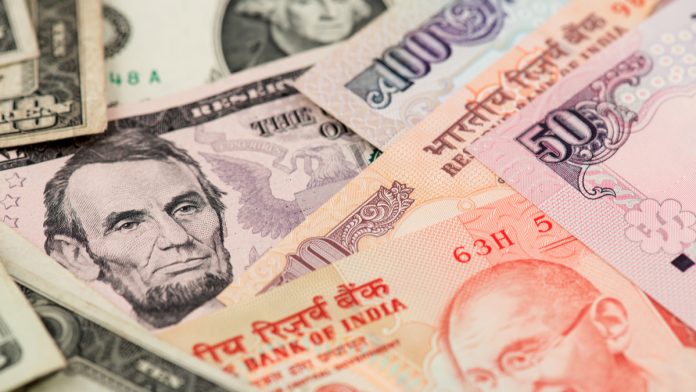- Indian Rupee (INR) extends losses for 6th session
- Daily covid cases remain above 160,000
- US Dollar (USD) trades edges higher as treasury yields rise
- US CPI inflation expected to rise 0.5% MoM
The US Dollar Indian Rupee (USD/INR) exchange rate continues to scale higher for a sixth straight session on Monday. The pair settled 0.3% higher on Monday at 74.98. At 12:00 UTC, USD/INR trades +0.6% at 75.42 at the high of the day, a level last seen in November last year.
The Rupee remains under pressure as covid cases in India remain elevated and authorities fret over infections rising further. New daily covid cases continue to be over 160,000 a day, yet this number could soar as thousands of Indians are set to bathe in the River Ganges tomorrow on the third day of a key Hindu festival.
Some have demanded the cancellation of the event given the deteriorating covid situation. Elsewhere election rallies in several states are also causing concerns.
Fears are rising that tighter lockdown restrictions will be required to bring cases under control again, potentially derailing the economic recovery.
The US Dollar is edging advancing versus the Rupee sand its major peers. The US Dollar Index, which measures the greenback versus a basket of major currencies trades +0.1% at the time of writing at 92.26.
The US Dollar is pushing higher, tracing US treasury yields northwards and paring gains from the previous session.
Investors are looking ahead to US inflation figures due to be released. Expectations are for consumer price index measure of inflation to rise 0.5% in March compared to the previous month, up from 0.4% in February. On an annual basis, analysts forecast CPI will rise to 2.5%, up from 1.7% the previous month.
The consumer price inflation data comes after wholesale inflation figures on Friday which showed that biggest annual increase in nine and a half years. Market participants are anticipating that inflation could rise significantly as the US economy reopens thanks to substantial fiscal stimulus and lose monetary policy.





